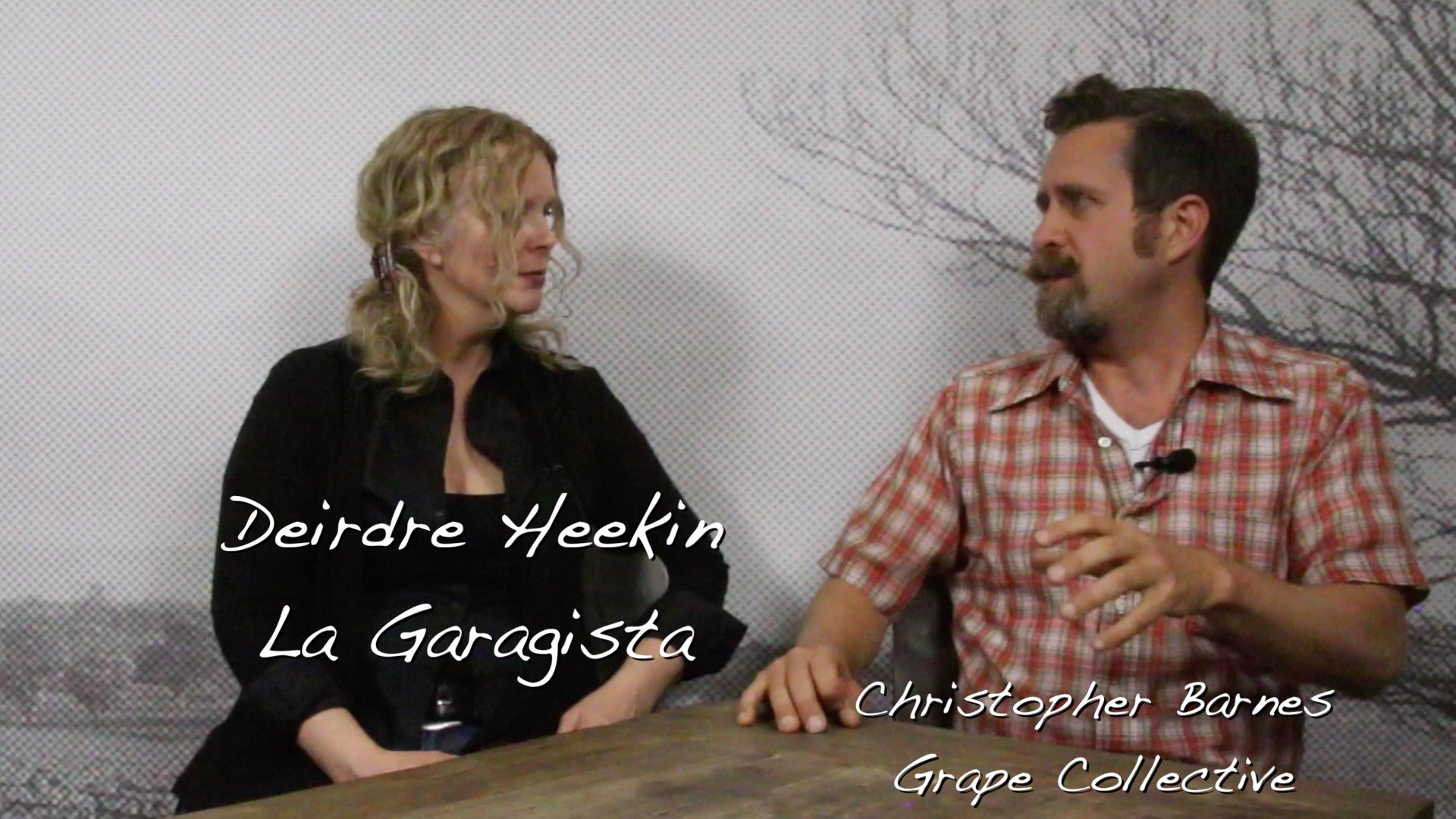
La Garagista is a small production, biodynamic winery located in Central Vermont. Yes - the state with very cold winters famous for Ben and Jerry's, cheddar cheese and skiing. And Vermont is cold. Winter temperatures can range from between 15 to 20 degrees Fahrenheit - temperatures that are generally too cold for traditional wine grapes.
Despite climate and perception challenges this Vermont winery has become an unlikely critical success. Eric Asimov in the New York Times described their wines as "so soulful and delicious." Food & Wine gushed that they are "complex and expressive of terroir."
And it is not just the critics loving the wines - the wines are in high demand from consumers. La Garagista wines are "allocated," meaning that demand is so high most retailers and restaurants are only offered very limited quantities of the wines. They are on the list at some of New York's most progressive wine destinations including Rouge Tomate, The Ten Bells, and the Four Horseman.
La Garagista was opened in 2010 by Caleb Barber and Deirdre Heekin as an extension of their popular farm-to-table restaurant Osteria Pane e Salute where they employed a whole-farm and diverse agriculture.
A practicing organic and biodynamic farm, they use composts, cover crops, and plant teas in addition to minerals to help manage the balance of the ecology in the vineyards. The grapes that they grow are ones that most people have not heard of. La Crescent, Marquette, Frontenac Gris, Frontenac Blanc, Frontenac, Brianna and St. Croix are all hybrids which are man-made crosses between vinifera grapes and those of hardier native American species, which can thrive in the cold of Vermont.
Grape Collective talks with winemaker Deirdre Heekin about her Vermont wine adventure.
Christopher Barnes: Deirdre, La Garagista, how did it start?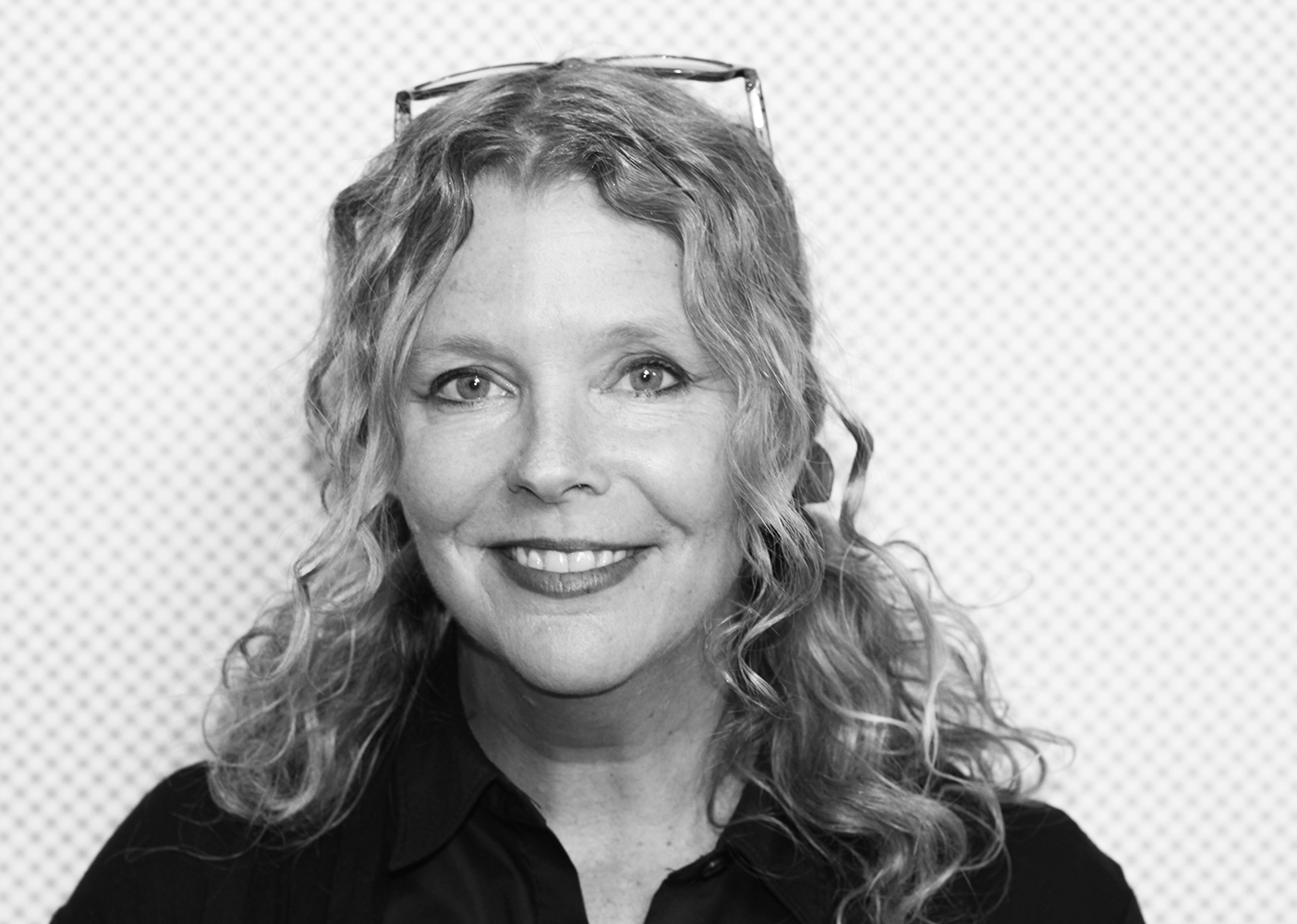
Deirdre Heekin: La Garagista started initially as an educational project for myself. My background is as a sommelier. My husband and I had a restaurant for 20 years. We actually just put it to bed, so we can focus all our attention on the wine, and doing food and wine at our farm. My background was as a wine educator essentially. I got to a point where I felt like I needed to understand better, viscerally and kinesthetically about the wine I was talking about at the table.
I understood intellectually, all those things like primary fermentation, secondary fermentation. But I wanted to experience them. I set off to make wine just for myself. I bought fruit from California with no provenance. My first wine was called "Senso Controlo," or ''Without Control." I made it in the bathtub and it was just supposed to be this fun project. I did that for a couple of years, then I realized what I really wanted to do was understand how a winemaker works in the field and makes the wine in the field, as opposed to the cellar.
Right at that moment, almost literally, a friend of ours came in and said to us, "Well, I just heard about this winery in Vermont that's doing some really interesting wine. I think you should check them out." "Oh, okay. That's cool. Somebody's growing wine in Vermont." We went. It is this wonderful winery that's been around for a number of years called "Lincoln Peak." We went and tasted with a winemaker and we were really impressed with what he was doing and all the potential that we could feel. We left that afternoon with 100 plants from his nursery and started planting.
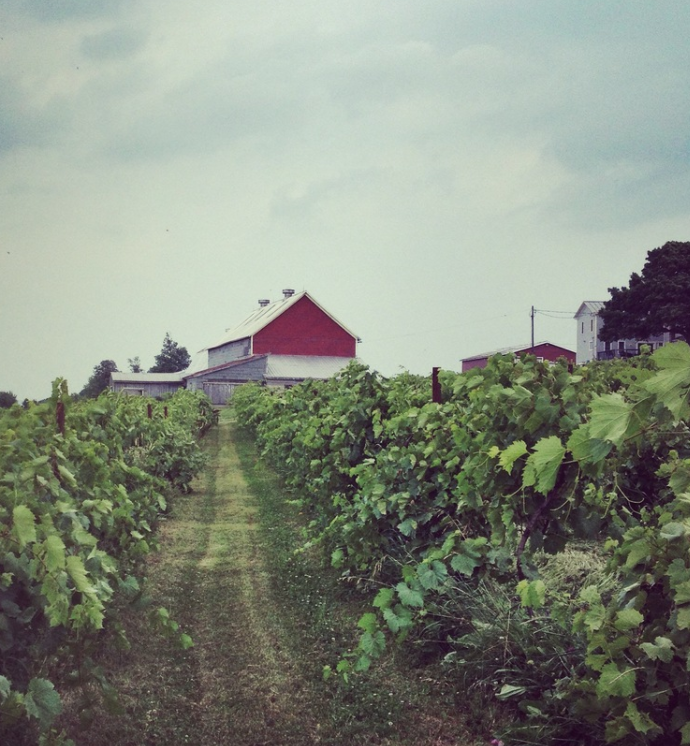 Initially, I thought, "Okay, I'm going to do this experiment and I'm gonna see if I can make some wine for the restaurant, certainly for ourselves. If it doesn't work out, it'll be great vinegar. Then, I went down the rabbit hole and I felt like I found my métier, and started in earnest in 2010.
Initially, I thought, "Okay, I'm going to do this experiment and I'm gonna see if I can make some wine for the restaurant, certainly for ourselves. If it doesn't work out, it'll be great vinegar. Then, I went down the rabbit hole and I felt like I found my métier, and started in earnest in 2010.
Talk a little bit about Vermont. When people hear Vermont, they think cheese. They think....
Yes, right ... beer.
Beer, Nobody thinks wine. For most people, Vermont seems like a very harsh, cold-
So it's more known for beer, artisanal beer. Because it's such a cold, challenging climate, of course everybody thinks, "You can't possibly grow wine there. You can't grow grapes. You couldn't possibly do something like Chardonnay or Cabernet." That's absolutely right. We can't grow Chardonnay or Cabernet, but we can grow these really beautiful regional, or what I call regional varietals. I associate them more with something like Brachetto from the Piemonte or Pineau d'aunis from the Loire Valley. They are particular to our places. They are what we commonly call hybrids. I like to call them just flat out grapes and not make a distinction between hybrid and vinifera because I feel as I've grown to work with them that they are just as legitimate and just as interesting, and have just as much to offer.
 The exciting thing about them is that they've allowed us to grow wine in a place like Vermont. Wine comes out of food culture, and we're growing wine in all 50 states in the United States. Each state is seeing some kind of renaissance on food. When you start to focus on where the food is coming from and what's coming to the table, it is a natural progression that leads you to wine or some kind of fermentation. And, in Vermont, we've seen beer and cider as the forerunner of that. But I don't find it surprising that we would be lead to wine as a direct result of what's happening in the food movement in a place like Vermont.
The exciting thing about them is that they've allowed us to grow wine in a place like Vermont. Wine comes out of food culture, and we're growing wine in all 50 states in the United States. Each state is seeing some kind of renaissance on food. When you start to focus on where the food is coming from and what's coming to the table, it is a natural progression that leads you to wine or some kind of fermentation. And, in Vermont, we've seen beer and cider as the forerunner of that. But I don't find it surprising that we would be lead to wine as a direct result of what's happening in the food movement in a place like Vermont.
Let's talk a little bit about hybrids. Crossing two grapes is something that, historically, has happened through Mother Nature. Where you'd have a region and you would have one grape, merging with another grape through the mechanisms of nature. These new varieties growing well in an area. Then they take off and they become the variety for that area. In a way, it's sort of like we're helping Mother Nature a little bit now. Is that fair?
I think that's totally fair. There are many things which I find interesting about the hybrids, but one of them is from a diversity perspective. There's been some conversation and some writing about concerns, about clonal selections from the traditional European varietals that we know, like Chardonnay, Cabernet, Pinot. And, that every time we're make selection of cuttings from those mother plants, and we duplicate the mother plant through the cutting, we're weakening the strain, we're weakening the DNA, we're weakening the species itself. So, when you work with something like the crosses, I find that they are strengthening the pool of what's available for grape material out there, because we're bringing in these other elements.
I'm very much a naturalist. I love the idea of, if I could, planting from seed and you could have natural selection happening and natural adaptation. But, I think that it's an exciting prospect to, and an artistry, to have a human hand involved in that process, because that is also part of evolution and the evolution of what's happening in wine.
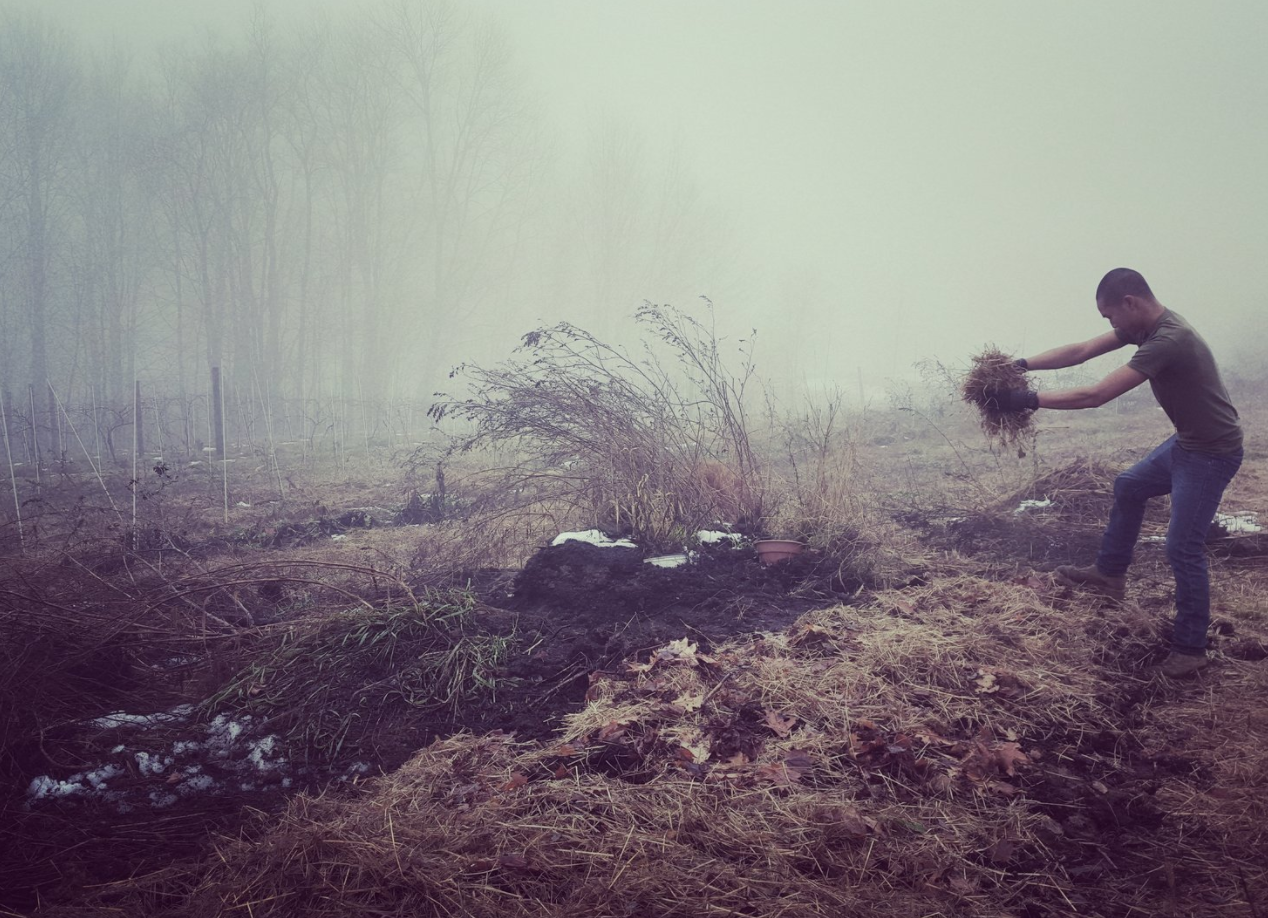
So Deirdre, I watched an interview with one of the more famous wine importers in the United States, whose focus is France and Italy. In the interview he suggested that an area like the Hudson Valley, they should not be making wine, they should be focusing on apples, because that is what's naturally produced out of the terroir, whereas in France and Italy, there's a climate and a tradition for grape growing. I mean, clearly Vermont is an extreme when you even think about the Hudson Valley. What do you think about that?
I have a lot to say about that. This is a common argument that people will say. And people who love wine and are involved in wine and feel passionately about wine. But what I think most people don't perhaps think of, or remember, or understand is that apples do grow beautifully here. They are very happy in our climate, but they are not native to the Unites States. They came to us from Asia, just like they came to everywhere else from Asia. Whereas grapes are actually indigenous to the Northeast.
In 1000 AD, when the Scandinavians came to this continent, when they landed, they looked around and they called it Vineland, because of the proliferation of all the vines that were growing here wildly, and we still have all those vines. That is one of the primary materials that is part of the structure of the hybrid. They are vinifera crossed with what it native to the Northeastern and Northern United States.
For me, I don't find that any different than what we were talking about before, where you have the birds and the bees creating hybridization, but over a longer period of time. I don't have a long period of time, if I would like to make wine where I live. I'm interested in looking at my locale and investing in my community, investing in my landscape and understanding my landscape, and If I want to make wine, I don't necessarily want to move myself to California. I had an opportunity to live in Italy at one point in my life. Loved it. Would certainly be happy to live there again but I love Vermont and I love that landscape and I love all the potential in something like grape growing and wine growing, and cider growing. I mean, we make ciders as well, so I firmly believe in the apple tree in Vermont. But I also firmly believe that the grape belongs there as well. We keep coming back to this idea of evolution and how wine and varietals are evolving, I think that is just part of our own natural selection.
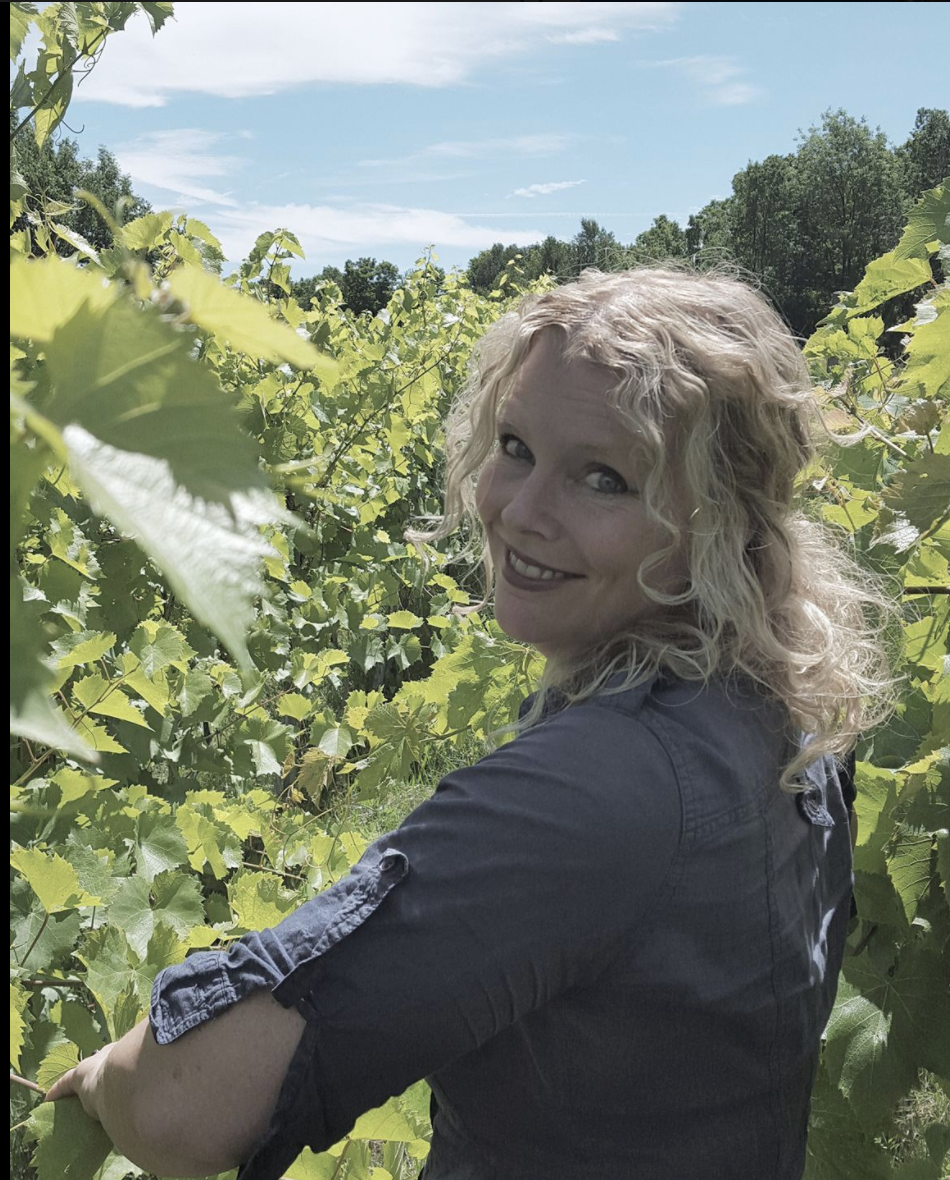 Deirdre, talk a little bit about the soils and the climate in Vermont as they pertain to raising a vine.
Deirdre, talk a little bit about the soils and the climate in Vermont as they pertain to raising a vine.
One of the truly, I think, exciting things about Vermont and the potential in Vermont, is that we have some of the oldest soils on earth. We have one of the first tectonic plates that rubbed up against each other, and created volcanic situations. As a result we have these beautiful clays and limestones in the Champlain Valley. We have two vineyards that we lease and farm there, and work with those kinds of soils and then we also have two vineyards in Barnard, Vermont, which is high altitude, 1,600 feet. Those are all volcanic soils. So we have everything from clay and limestone as well. But schist, garnet, quartz, amphibolite, all this really super interesting stuff. Even within our two-acre parcel on one side of the road, it's varied within that parcel and we plant to what's happening in the soils, within that two acres. Soil is really interesting.
Climate is changing, whether people want to believe that or not. There are definite changes. We've seen lots of variation, just in the 20 years where I've been living, where I'm living, in Vermont, in terms of temperature, in terms of rain, all kinds of weird crazy things happening. There's some kind of running joke. There's a wine map out there somewhere that says Vermont is going to be the new Napa in 100 years. I don't know where it is but somebody told me about it. So, I think that even though we're firmly entrenched with working with these crosses, these hybrids, and we have tried to work with vinifera, I think it's just not the right time to try and be doing that, in a place like Vermont.
 The climate is evolving. We're seeing more extremes. Last year, actually, 2016, we actually had a perfect vintage and a perfect season. Perfect growing climate. It was very dry. For us, that's important because we have a lot of moisture, a lot of humidity, a lot of water. So we had just enough rain, but a dry and long growing season and we'll probably never see that again. Or, it might be every 10 years we see that.
The climate is evolving. We're seeing more extremes. Last year, actually, 2016, we actually had a perfect vintage and a perfect season. Perfect growing climate. It was very dry. For us, that's important because we have a lot of moisture, a lot of humidity, a lot of water. So we had just enough rain, but a dry and long growing season and we'll probably never see that again. Or, it might be every 10 years we see that.
Previously to that, we had been seeing extreme rains for May and June, extreme heat in April. Then getting very cold. Rain through June, sometimes halfway through July, then a drought the last half of the summer and it worked to our advantage in terms of grape growing because we would have this sunny dry period after all these rains, but we'd still have to deal with what is happening with the rain, at the beginning of the season.
With weather and nature there is never any rhyme or reason, but I think that is more extreme now.
With the climate in Vermont, with the challenges of both rain and frost, are you able to farm organically?
Yes, we are. We look at it just like you would any other place. I'm farming exactly the same way I would farm if I lived in Burgundy or Southern Italy or England or California. Not the same way necessarily in all the things that I'm doing, but with the same ethos. You respond to what the season is giving you. One of the things that I think is also great about working with the hybrids, is that we have a leg up in terms of being able to work organically. We're also practicing biodynamic because of the DNA of these plants; they have natural resistance to the kinds of diseases we're prone to in the Northeast. Because we've got these wild elements that are indigenous, that give us a little something. In some ways I don't think about it, we just do what we do, and we deal with the hand that nature deals us that year. We feel strongly and firmly about working organically and the season will be what the season is.
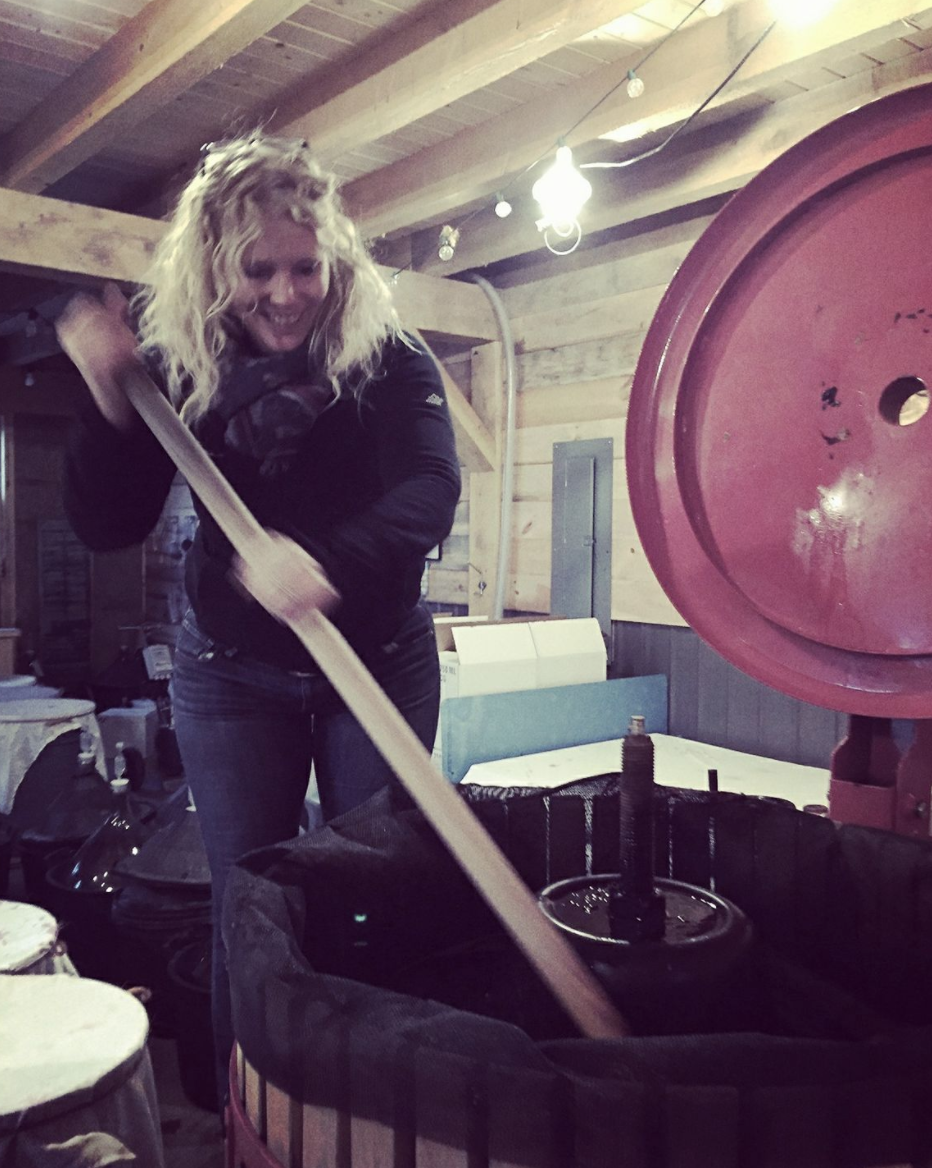 I think we also try and be flexible. We try and be flexible in the cellar, if the season is a particular season with a lot of rain. We may not be able to make all the wines that we would normally make in a given year. Maybe we're making more sparkling wine that year. Or, the wines are going in a certain direction that, maybe what we want to make is Grappa. We try and be open to not pigeonholing and having a set idea that "This is the way to make wine in Vermont." Or, "This is the way to make wine anywhere." We want to be flexible and respond to what nature gives us.
I think we also try and be flexible. We try and be flexible in the cellar, if the season is a particular season with a lot of rain. We may not be able to make all the wines that we would normally make in a given year. Maybe we're making more sparkling wine that year. Or, the wines are going in a certain direction that, maybe what we want to make is Grappa. We try and be open to not pigeonholing and having a set idea that "This is the way to make wine in Vermont." Or, "This is the way to make wine anywhere." We want to be flexible and respond to what nature gives us.
How many people are there making wine in Vermont right now?
There are about 20 to 25 licensed wineries. I would say the oldest vineyards are about 20 years old, 22 years old. We work with two vineyards that are 13 and 12 years old. Our home vineyard we started planting in 2007. That's being planted in blocks, so that's actually getting up there is age now too. For some reason I keep thinking it's 2014 still, but wow. So there are parts of our vineyard that are 10 years old, that are at the home farm.
We've just planted a new vineyard across the road from the home front vineyard that we'll still be planting this year. This vineyard is a collaboration with friends. And, there is lots of planting going on in Vermont. We've got these 20 to 25 folks who are making wine and have been making wine for some time. There's a whole new wave of people who are coming up and coming in. Young people, people who are my age or a little bit older, who are coming to the area or have lived in the area and are just fascinated with this idea of being able to work with the land, and fruit and make wine and ferment things.
Fermentation in Vermont, that's what it's all about. We have a lot of fermentation happening.
 I mean you imagine somebody going to Vermont, you're not going there to start to spray chemicals everywhere, right? Is there an organic ethos amongst the sort of new wave of winemakers?
I mean you imagine somebody going to Vermont, you're not going there to start to spray chemicals everywhere, right? Is there an organic ethos amongst the sort of new wave of winemakers?
In the new wave there is for sure. Very much so. I think, historically, and I think this happens in any new wine region. That people are coming out of university and they're looking to universities about how to get this whole thing started. Some universities will offer a conventional path and an organic path. Some universities are more focused on a conventional path to get people started. I think Vermont falls into that category; that a lot of people to get started were educated in a more conventional way. Even with how well known Vermont is for its organic farms, its CSAs and really focusing on those kinds of elements.
Wine and grape growing, I think people felt it was going to be too challenging to approach organically. But my husband always says this great thing. He always says, "But nobody ever finishes that sentence," which is, "and, make their financial goals." I think it depends on what your idea for a winery is and what you want to do. Do you want to have a winery that's a business, with a tasting room and where you're doing direct to consumer sales? You have a certain amount of money that you need to make a year to put your kids through college and food on your table and all those things that we have to think about, or are you making wine because you're passionate about wine? There are both of those things happening in Vermont, as there are in every other wine region. But I think now, with this second wave, that we're talking about, farming the grapes organically seems to be more of the interest and the norm, which is very exciting.
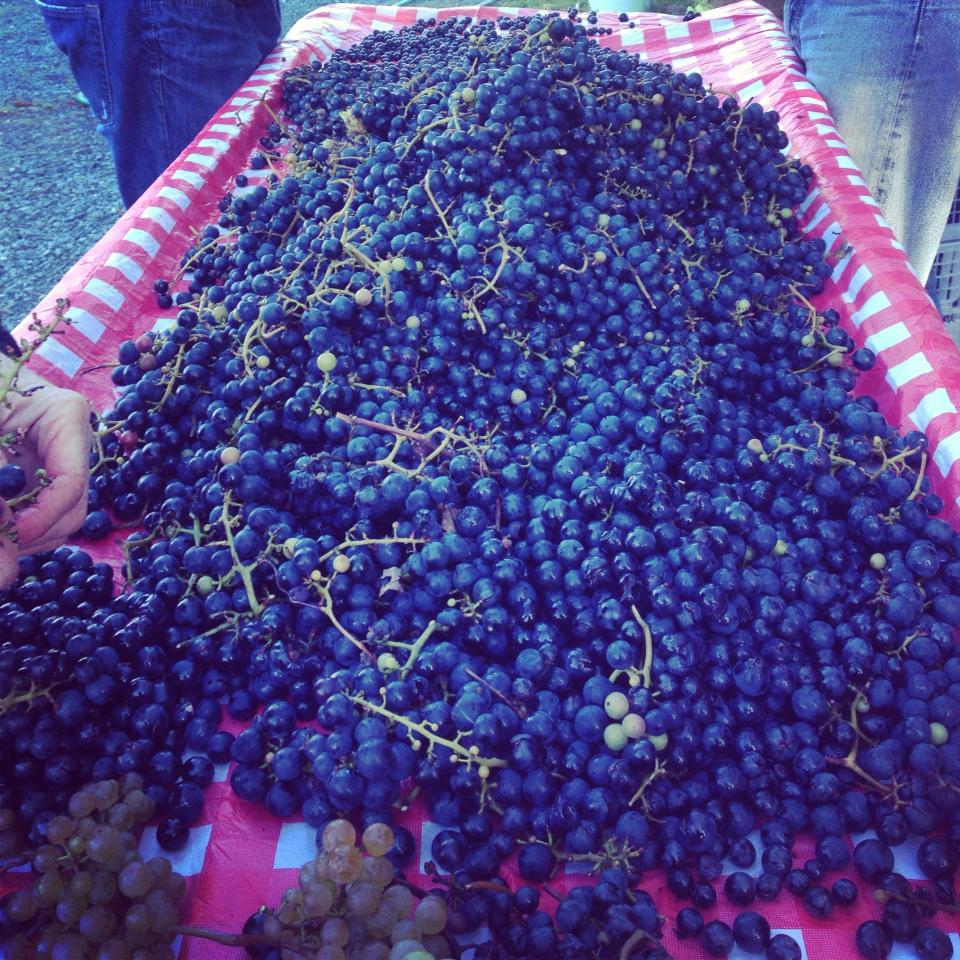 So, Deirdre, how would you describe the taste profile of these hybrid grapes that you're making right now in Vermont?
So, Deirdre, how would you describe the taste profile of these hybrid grapes that you're making right now in Vermont?
I like to liken them to other kinds of regional Alpine varietals out there in the world. My background in wine was always focused on Italian wines. I had and still have a particular love for Alpine, Italian wines. That has certainly extended to French, and Austrian and German and Eastern European wines. I would encourage people, when they are tasting our hybrid wines that we grow in the Northeast, to think about other, Northern Alpine varietals. They may not be varietals that they are familiar with, but they're out there. I feel that there are enough of these native, indigenous varietals, say, in Italy, that are coming to the fore, that wine drinkers are becoming more and more familiar with, rather than the usual Sangiovese or Nebbiolo.
They are hearing about things like Bracchetto or things from Alto Adige that are a little bit different, so I encourage people to think about them in that way. I encourage people to think about them in terms of food. That's another thing that's very exciting for me about hybrids is that I think that they are really beautiful food wines. They tend to be higher in acid, in terms of their personality and in general. As varietals and certainly with the wine. I like that because it makes them friendly food companions. I think that if we can have a discussion with consumers about wine with food and thinking about wine as food, that that will give them another window into some of the elements that are different with hybrid varietals then what we might be used to normally.
 How has your winemaking changed over time? Did you have preconceived ideas about a style or a methodology and then have to change it up based on the actual facts on the ground?
How has your winemaking changed over time? Did you have preconceived ideas about a style or a methodology and then have to change it up based on the actual facts on the ground?
I would say it hasn't changed much. The reason being the first year that I made wine professionally, shall we say. One of my mentors who is a gentleman down in the south of Italy, a guy named Bruno de Conciliis, his advice to me, my first year making wine officially, was "You're going to make it like a peasant." You're going to do everything by hand. You're going to crush your fruit by feet. You're going to use a demijohn and you're going to add nothing. You're going to do native fermentation. Maybe you add some S02 at the finish, if you need to, but you're going to try not to. You're just going to do it like an old farmer." I said, "Okay, sounds good, because that's about my speed, because I have no idea what I'm doing. We did it that way the first year and we've never done it differently.
One of the things Bruno had said to me was, "Do it this way the first year and then you can make choices, if you want to be more experimental, or you want to go in other directions and try other things. You can but at least have this base." I felt after that first experience, "Why would I want to make it any differently?"
Certainly I feel like every year I learn something significant that helps me to be a better guide to the wine. My aesthetic is to do as little as possible, to stay out of the way. One of the things that I talk about a lot with the hybrids is that they want as little intervention as possible. They are completely transparent. If you try and get clever. If you try and play with too many additives, if you try and monkey around in the cellar, if you try and monkey around in the field, you know it. They fight it. "Don't put baby in a corner." They just really want to be left to their own devices. That's something I'm trying to learn and grow with each year, that I'm making wine.
I feel these varietals are not only helping me to be a better farmer and a better winemaker in the cellar, but I feel like they're showing me a way to help them show the world what they can be, by doing as little as possible.
So Deirdre, you're making 700 cases right now, which is a very small amount.
Very small.
It's a rounding error in some wineries in the United States.
Yes I guess that's right. I hadn't thought of it that way.
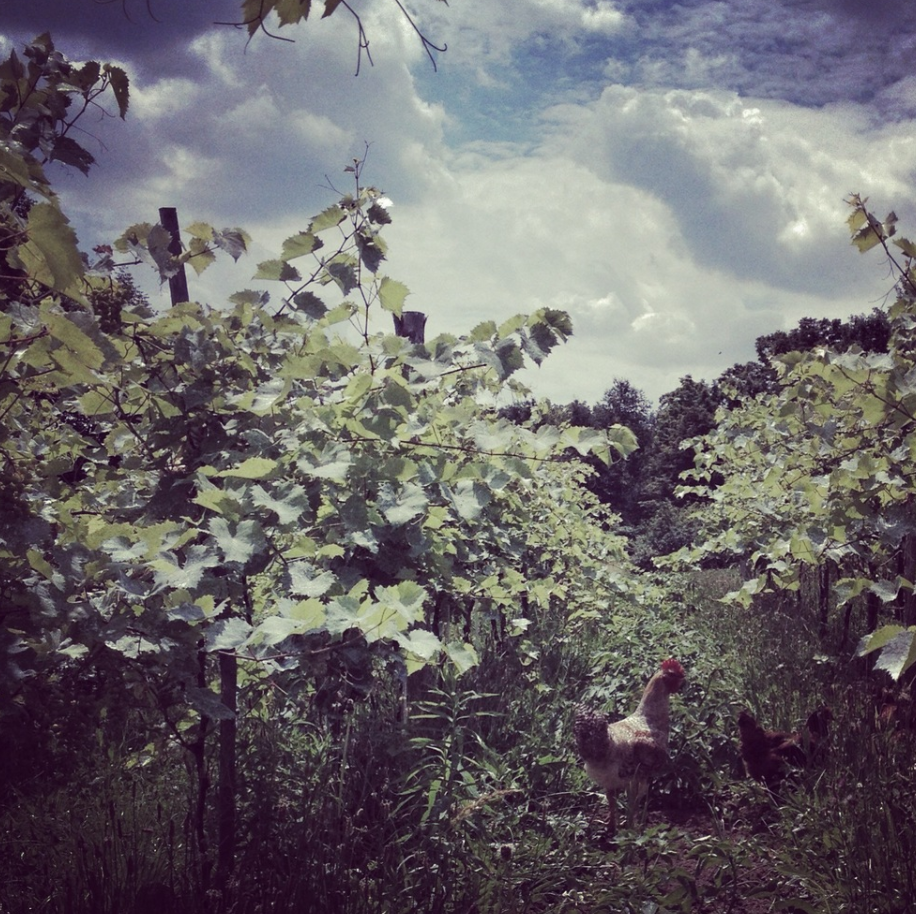 How big are you looking to get?
How big are you looking to get?
We are hoping to grow to about 2,000 cases. We feel that that's a sweet spot for us in that, we can continue to be hands on. I never want to be out of the field. My goal, every day, is "What can I do to get back in the field?" And, in the cellar. So 2,000 feels like that's the right amount. We started out with maybe 800 bottles, half bottles. We did half bottles so it would seem like we had more wine, but over time, we've been able to graduate to grown up bottles.
Every year we produce a little bit more. Our vineyards are getting older and their production levels are changing. Two of our vineyards are reclamation vineyards. They went through some distressing periods in their lives, and hadn't been in full production for quite some time and now we are getting close to that. Plus, we have some new vineyards that we're planting and some collaborative projects that we're doing. I think we can get to 2,000. That is always the question, "Can we get there?"
How many different types of grapes are you working with right now?
We grow about seven different kinds of varietals and they all have these beautiful, unique kinds of kooky names. We have in our home farm vineyard, we grow six, co-planted, "La Crescent" which is a white that's descendant from a couple of different Muscats. If we have a noble white, I would say it's the La Crescent. We have a red called "Marquette" which is descendant from Pinot Noir. It's really only like Pinot Noir in terms of its growing habits. It's fussy and difficult, but we love her anyway. She reads a little bit more like Gamay if you were trying to find a European counterpart. We grow three different kinds of Frontenac: Frontenac Noir, Gris and Blanc. Then, in the home front vineyard we grow a little varietal called St. Croix.
In the other two major vineyards, one is co-planted to four varietals, the La Crescent and the Marquette. We grow the Frontenac Gris, which we make different kinds of rosé from. And, a very obscure varietal called "Brianna." Brianna is really interesting if you're ever looking at the Jancis Robinson book on varietals, Brianna has a three-page pullout of her family tree. There are all kinds of vinifera in the background. There are also some natural selections of hybridization that they don't know how it happened. It happened in the nursery. In Brianna there's everything from Grenache Blanc to Borba Blanc to Schiava to Tempranillo Gris, Monastrell. Really interesting, curious, out there varietals. I think we're one of the only vineyards in Vermont that's growing it. I think you find it a bit more in places like Minnesota. We find it very exciting, because it's so unique and so different.
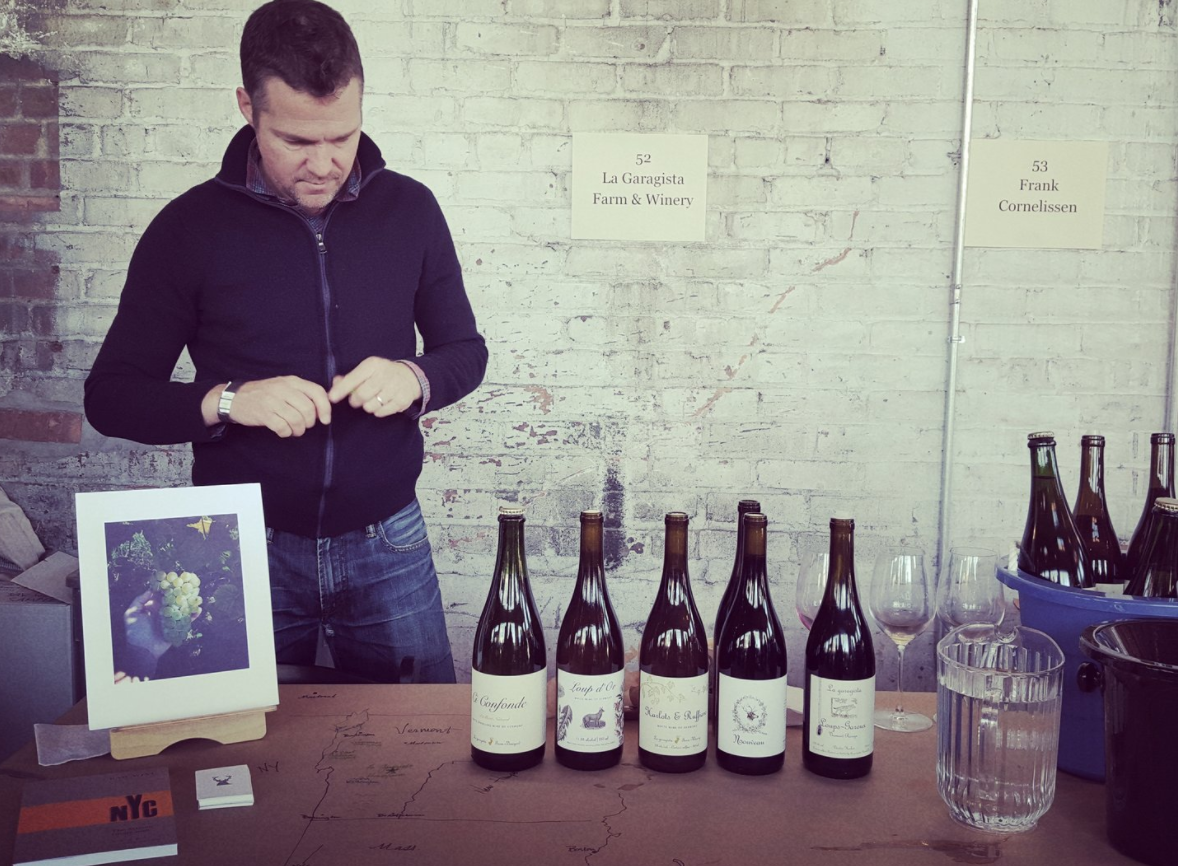 Deirdre, talk a little bit about your philosophy of viticulture.
Deirdre, talk a little bit about your philosophy of viticulture.
We have our home farm vineyard which is really a polyculture experiment. We grow vegetables there. We've been growing vegetables there for our restaurant that we just moved from, after 20 years. We'll still be growing vegetables for ourselves and for our pop-up wine bar and supper club that will be happening at the farm. We have tons of fruit trees. We have pears, plums. I know you're thinking, "What does this have to do with viticulture but, we're growing pears, plums, apples, sour cherries. We have a heritage rose garden. We grow all of these things together along with the grapes. Everything bleeds into everything else.
There are cabbages and onions in the rose garden, there are chicories and daffodils in the apple orchard. There are other kinds of vegetables like tomatoes, and bunching onions and different kinds of herbs with the plum trees and the pear trees. We have vegetables in the vineyard, which is a very old concept of viticulture that I learned about from Northern Italy, where they used to co-plant not only different grape varietals, which is something we're really interested in, but they co-planted different varieties of living things together.
We grow in our home vineyard onions, carrots, beets, chicories, lots of root vegetables, so that when you are pulling them, it helps work the soil naturally. Those are very good companion plants for vines. Because we're very fortunate that we have these different sites, we have slightly different methodologies in each vineyard.
So we had this home vineyard which is this polyculture project. We have this vineyard outside of the town of Vergennes, in the Champlain Valley, which is very broad and open and we work with some of the native flora there. We are primarily growing wild carrot, also known as "Queen Anne's Lace," also wild chrysanthemum. I could go into a very long and involved story about why I think those things are growing there, but it's part of the symbiosis of the ecology, in that particular vineyard.
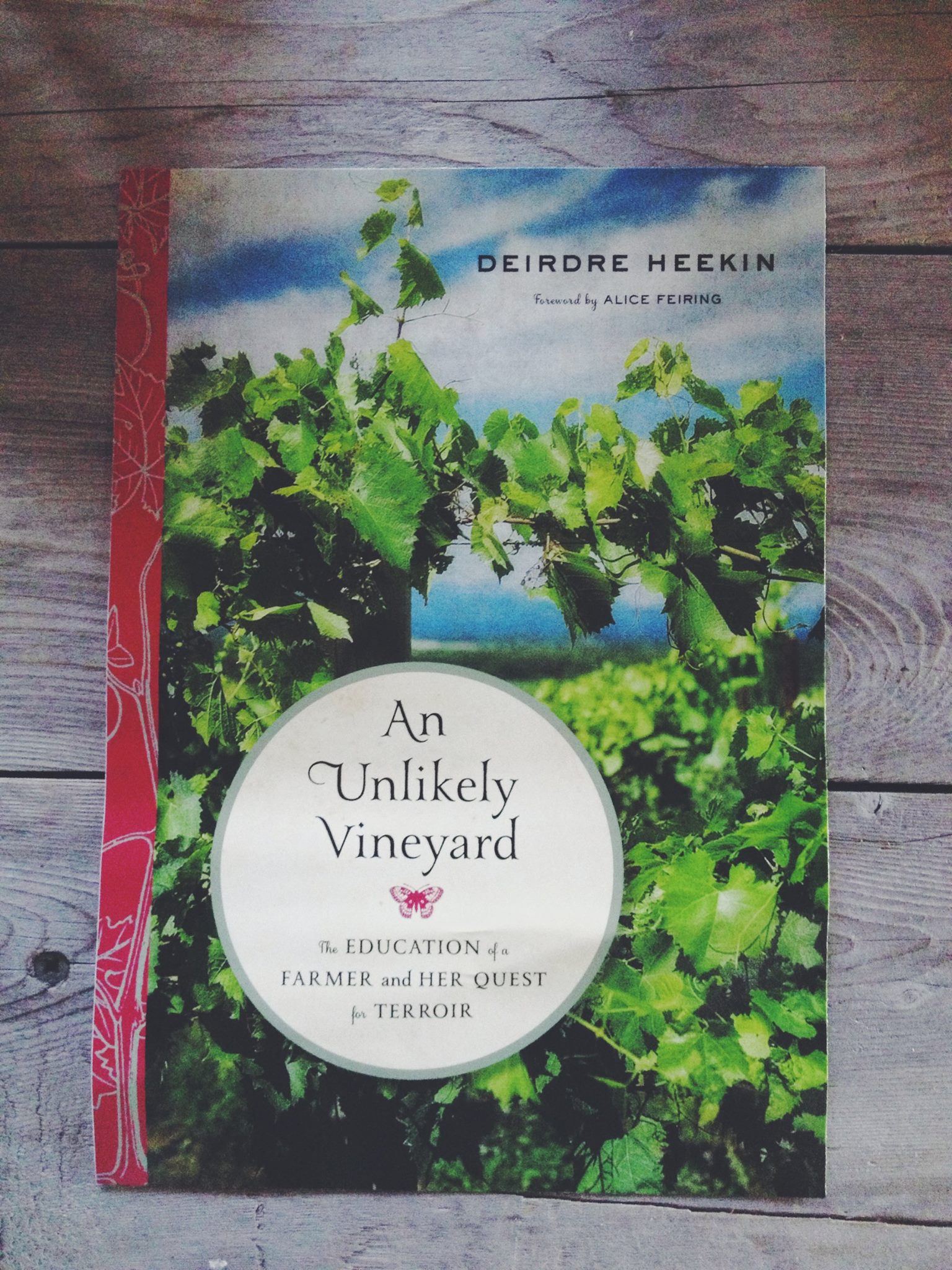
Then the second vineyard in the Champlain Valley which is right on Lake Champlain is essentially a wild vineyard. We work even more intensively with the wild flora that grows there. We have three main flowers, a purple aster, a wild mint and a daisy fleabane. They grow up into the canopy with the fruit which is highly unusual in the Northeast. You would never recommend that to anyone, whether you were growing organically or conventionally, because we have too much humidity. It traps too much moisture. It doesn't allow air flow, but what we've learned in working with this flora, they are all anti-fungal and anti-microbial. They actually create a mini microclimate around the fruit itself that helps protect it and allows us to work in this organic way, with permaculture and biodynamics as all mixed in with our philosophy.
Do the hybrids themselves have a quality about them that allows you to farm less intrusively?
Yes, I feel like they allow us to farm less intrusively, but also work less intrusively in the cellar. In fact, if you try and work more ... if I can say that ... work in a more clever fashion in the cellar, with lots of tricks and trying to change them ... People ask the question of "Well, hybrids taste a little bit different maybe. Their palate is a little bit different or they're higher in acid. How can I make the Marquette taste more like Cabernet Sauvignon or Syrah?" Another producer might try and use different kinds of cultured yeasts or deacidify or use enzymes to do other things. I really believe that when you try and do those things, they kick back. They don't like to have those kinds of modes of production employed. They become flabby. They become too acidic. They become imbalanced. We've really learned that if you leave them alone that is where they find their true balance.
(Homepage banner designed by Piers Parlett)
Read more about La Garagista in Food & Wine and Eric Asimov in the New York Times
Read a reivew of Deirdre Heekin's book An Unlikely Vineyard: The Education of a Farmer and Her Quest for Terroir on New York Times
Buy Deirdre Heekin's book An Unlikely Vineyard: The Education of a Farmer and Her Quest for Terroir on Amazon














